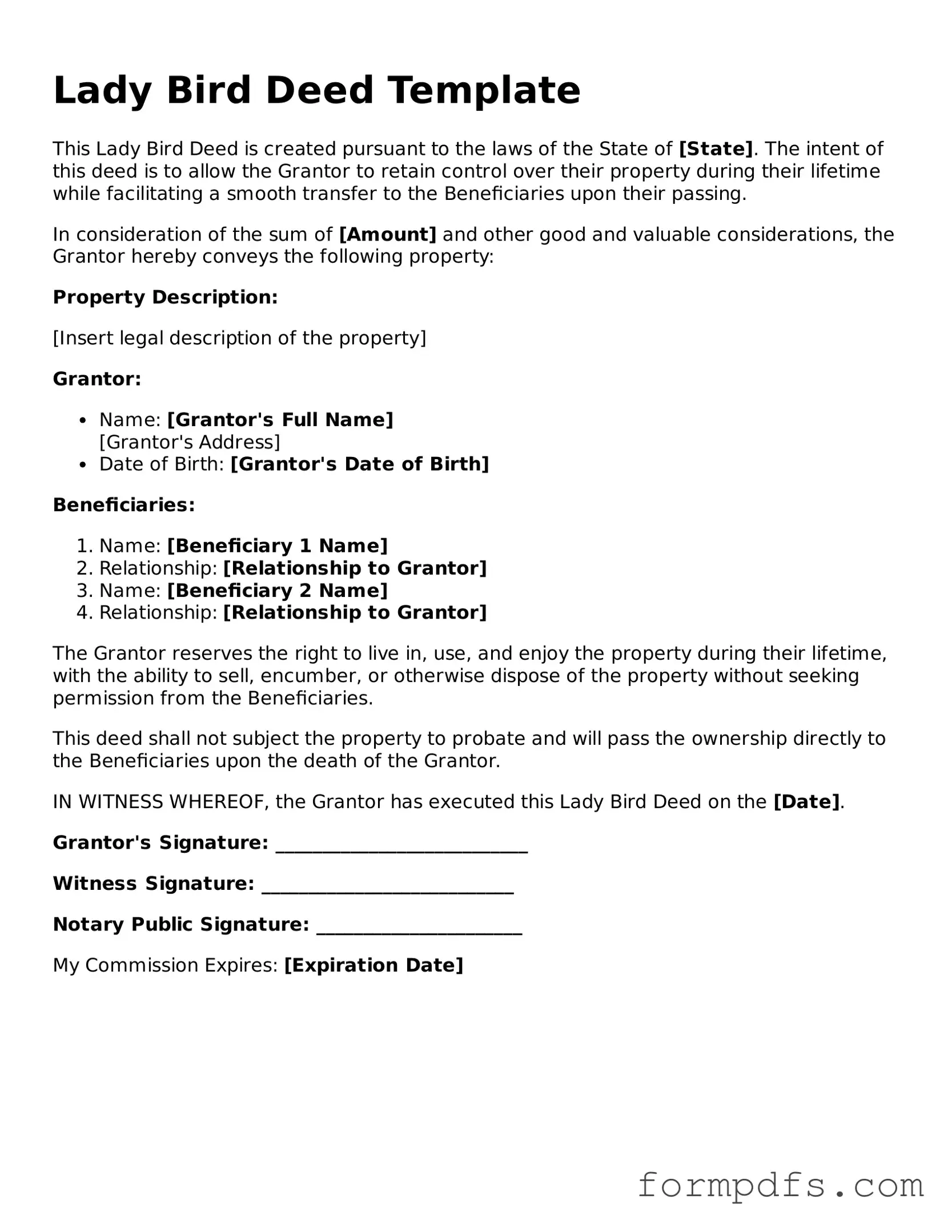What is a Lady Bird Deed?
A Lady Bird Deed, also known as an enhanced life estate deed, allows property owners to transfer their real estate to their beneficiaries while retaining control during their lifetime. This type of deed provides the owner the ability to sell, mortgage, or otherwise manage the property without needing the consent of the beneficiaries. Upon the owner’s death, the property automatically transfers to the named beneficiaries, avoiding the probate process.
Who can benefit from using a Lady Bird Deed?
Anyone who owns real estate and wishes to simplify the transfer of their property upon death may find a Lady Bird Deed beneficial. It is particularly useful for individuals who want to avoid probate, ensure a smooth transition of property to heirs, and retain control over their property while still living. This deed is often favored by seniors looking to pass on their homes to children or other loved ones without complications.
Are there any tax implications associated with a Lady Bird Deed?
Generally, a Lady Bird Deed does not trigger immediate tax consequences. The property remains in the owner's name for tax purposes, meaning the owner continues to pay property taxes. However, when the property transfers to the beneficiaries, they may receive a step-up in basis, which can reduce capital gains taxes if they decide to sell the property later. It’s wise to consult a tax professional to understand the specific implications based on individual circumstances.
How do I create a Lady Bird Deed?
Creating a Lady Bird Deed involves drafting the document to include specific details such as the names of the current property owners, the beneficiaries, and a clear description of the property. While templates are available online, it is advisable to work with a legal professional to ensure that the deed complies with state laws and accurately reflects your intentions. Once completed, the deed must be signed, notarized, and recorded with the appropriate county office.
Can a Lady Bird Deed be revoked or changed?
Yes, a Lady Bird Deed can be revoked or modified at any time while the original owner is still alive. This flexibility allows property owners to change beneficiaries or adjust terms as their circumstances or intentions change. To revoke a Lady Bird Deed, the owner must create a new deed that explicitly states the revocation or creates a new deed with updated terms and beneficiaries, which must then be properly executed and recorded.
